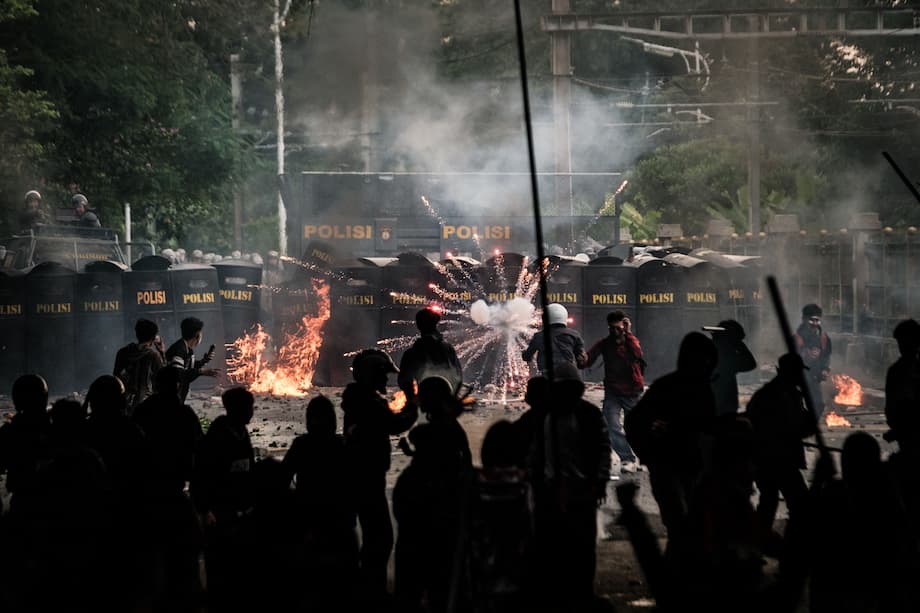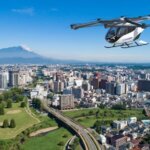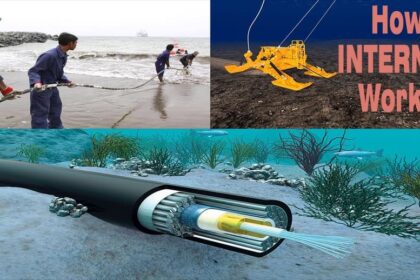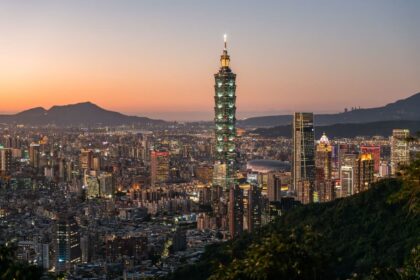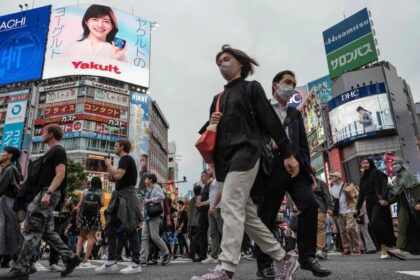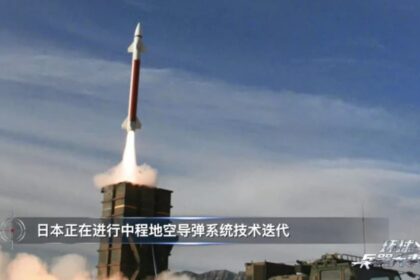Nationwide Protests Ignite After Police Vehicle Kills Delivery Rider
Indonesia has been rocked by a wave of mass protests and violent unrest after a 21-year-old motorcycle taxi driver, Affan Kurniawan, was killed by a police armored vehicle during demonstrations in Jakarta. The incident, captured on video and widely shared on social media, has become a flashpoint for public anger over police brutality, government insensitivity, and economic hardship. The protests, which began over lawmakers’ controversial housing allowances, have rapidly escalated into one of the most significant challenges for President Prabowo Subianto’s administration.
- Nationwide Protests Ignite After Police Vehicle Kills Delivery Rider
- How Did the Protests Begin?
- The Death of Affan Kurniawan: A Catalyst for Outrage
- Protests Spread and Turn Violent Across Indonesia
- Government and Police Response
- Violence, Tragedy, and the Shadow of 1998
- Broader Implications for Indonesia’s Democracy
- In Summary
How Did the Protests Begin?
The unrest was initially sparked by revelations that all 580 members of Indonesia’s parliament were granted a monthly housing allowance of 50 million rupiah (about $3,075)—nearly ten times the minimum wage in Jakarta. This news, coming at a time when many Indonesians are struggling with rising living costs, unemployment, and stagnant wages, triggered widespread outrage. Critics called the allowance excessive and insensitive, especially as social media videos showed politicians flaunting lavish lifestyles.
Protests began earlier in the week, led by students and labor groups demanding the repeal of the allowance and broader reforms. Demonstrators voiced anger not only at lawmakers’ perks but also at the lack of jobs, high taxes, and perceived government corruption. The movement quickly gained traction, drawing in ride-hailing drivers, rights activists, and ordinary citizens from across the country.
The Death of Affan Kurniawan: A Catalyst for Outrage
The situation escalated dramatically on Thursday evening, when Affan Kurniawan, a motorcycle ride-sharing driver for Gojek and Grab, was run over and killed by a police armored vehicle near the parliament building in Jakarta. Witnesses reported that Kurniawan was completing a food delivery order and was not involved in the protests when he was caught in the chaos. According to eyewitnesses, the armored vehicle from the National Police’s Mobile Brigade unit sped through a crowd of demonstrators, struck Kurniawan, and ran over him without stopping.
The incident was filmed and quickly went viral, sparking nationwide outrage and intensifying calls for police accountability. Thousands of motorcycle drivers, activists, and politicians attended Kurniawan’s funeral, escorting his body in a massive convoy through central Jakarta. The outpouring of grief and solidarity reflected the deep sense of injustice felt by many Indonesians.
Jakarta Legal Aid, a prominent rights group, urged the government to release hundreds of people arrested during the demonstrations, stating: “No one should lose their life for protesting.”
Protests Spread and Turn Violent Across Indonesia
Following Kurniawan’s death, protests erupted in multiple cities, including Jakarta, Surabaya, Bandung, Makassar, Yogyakarta, Medan, Manado, and as far as Papua. Demonstrators marched to the headquarters of the police mobile brigade in Jakarta, with some attempting to storm the compound. Police responded with water cannons and rounds of tear gas, while protesters hurled bottles, rocks, and flares. In some instances, protesters set fire to buildings, vehicles, and government offices.
In Makassar, South Sulawesi, the unrest turned deadly when protesters set fire to a council building, trapping several people inside. At least three people were killed in the blaze, including two council staff members and a civil servant. Similar scenes played out in Bandung, where protesters torched a regional parliament building, though no casualties were reported there.
Shops and malls near protest sites in Jakarta closed early due to safety concerns, with many residents recalling the traumatic May 1998 riots that led to the fall of the Suharto dictatorship. The specter of past violence loomed large as demonstrators and security forces clashed in the streets, and the military was deployed in several areas to restore order.
Economic Impact and Public Disruption
The unrest has rattled investor confidence in Southeast Asia’s largest economy. The Indonesian rupiah fell nearly 1% against the US dollar, and the stock index dropped as much as 2.3% before recovering slightly. Schools in Jakarta dismissed students early, and many businesses instructed employees to work from home. The protests have disrupted daily life in major cities, with traffic brought to a standstill and public transportation routes blocked by crowds.
Government and Police Response
President Prabowo Subianto, facing the most serious test of his presidency, addressed the nation in a televised speech. He expressed condolences to Kurniawan’s family and called for calm, promising a thorough and transparent investigation into the incident. Prabowo, a former general, acknowledged public anger and disappointment with the police’s excessive actions.
President Prabowo Subianto stated: “I am deeply concerned and deeply saddened by this incident. I was shocked and disappointed by the officers’ excessive actions. I have ordered a thorough and transparent investigation, and officers involved must be held accountable.”
The National Police chief, Listyo Sigit Prabowo, also issued a public apology and confirmed that seven members of the police motor brigade linked to Kurniawan’s death had been detained and questioned for breaches of professional ethics. However, the driver of the armored vehicle has not yet been identified. Authorities have pledged to provide financial support to Kurniawan’s family.
Despite these assurances, protesters remain skeptical, demanding concrete reforms and accountability for police violence. Amnesty International and other rights groups have condemned the government’s crackdown on demonstrators, emphasizing that excessive force and arbitrary arrests must end.
Calls for Police Reform and Justice
Many protesters see Kurniawan’s death as emblematic of broader issues with police brutality and lack of accountability in Indonesia. The Mobile Brigade Corps (Brimob), the elite paramilitary police unit involved in the incident, has long been criticized for its heavy-handed tactics. Demonstrators are calling for sweeping police reforms, including independent investigations into deaths in custody, better oversight of law enforcement, and stronger protections for civil liberties.
Pendi Nasir, a motorcycle driver who joined the protests, told Reuters: “We don’t want our colleagues here to become victims of this riot again. We want action against those at fault.”
Protesters have also demanded the repeal of the lawmakers’ housing allowance, higher wages, lower taxes, and stronger anti-corruption measures. The movement has united diverse groups—students, gig workers, labor unions, and rights activists—around a common cause: justice and dignity for ordinary Indonesians.
Violence, Tragedy, and the Shadow of 1998
The scale and intensity of the protests have drawn comparisons to the 1998 riots that toppled President Suharto after three decades of authoritarian rule. Then, as now, economic hardship, government corruption, and police violence fueled public anger. The memory of those events, which saw over a thousand people killed and widespread destruction, has heightened fears of further escalation.
In the latest unrest, at least three people have died in Makassar, and dozens have been injured in clashes with police. Authorities reported that 25 police officers were hospitalized with serious injuries, while the number of injured protesters is believed to be higher. Nearly a thousand people have been arrested in Jakarta alone, according to police sources.
Despite heavy rain and aggressive police tactics, crowds have remained determined, with students and motorcycle taxi drivers at the forefront. Demonstrators have used patriotic songs, banners, and social media to amplify their demands for justice and reform.
Broader Implications for Indonesia’s Democracy
The protests represent a critical moment for Indonesia’s democracy, testing the government’s commitment to transparency, accountability, and the rule of law. President Prabowo, who campaigned on promises of economic growth and social stability, now faces mounting pressure to deliver meaningful reforms and restore public trust.
Observers warn that failure to address the underlying grievances—economic inequality, police impunity, and political corruption—could lead to further unrest. The government’s response will be closely watched both domestically and internationally, as Indonesia is often seen as a bellwether for democratic progress in Southeast Asia.
Made Supriatma, a visiting fellow at the ISEAS-Yusof Ishak Institute in Singapore, told Reuters: “If Prabowo isn’t careful, protests may devolve into chaos.”
In Summary
- Mass protests erupted across Indonesia after a police armored vehicle killed 21-year-old delivery rider Affan Kurniawan during demonstrations in Jakarta.
- The unrest was triggered by public anger over lawmakers’ new housing allowances, economic hardship, and police brutality.
- Protests spread to multiple cities, turning violent in some areas, with at least three people killed in a fire at a council building in Makassar.
- President Prabowo Subianto and police officials have apologized and promised a thorough investigation, detaining seven officers linked to the incident.
- Protesters demand police reform, repeal of lawmakers’ perks, and greater accountability for state violence.
- The unrest poses a major test for Indonesia’s democracy and the government’s ability to address deep-seated grievances.


